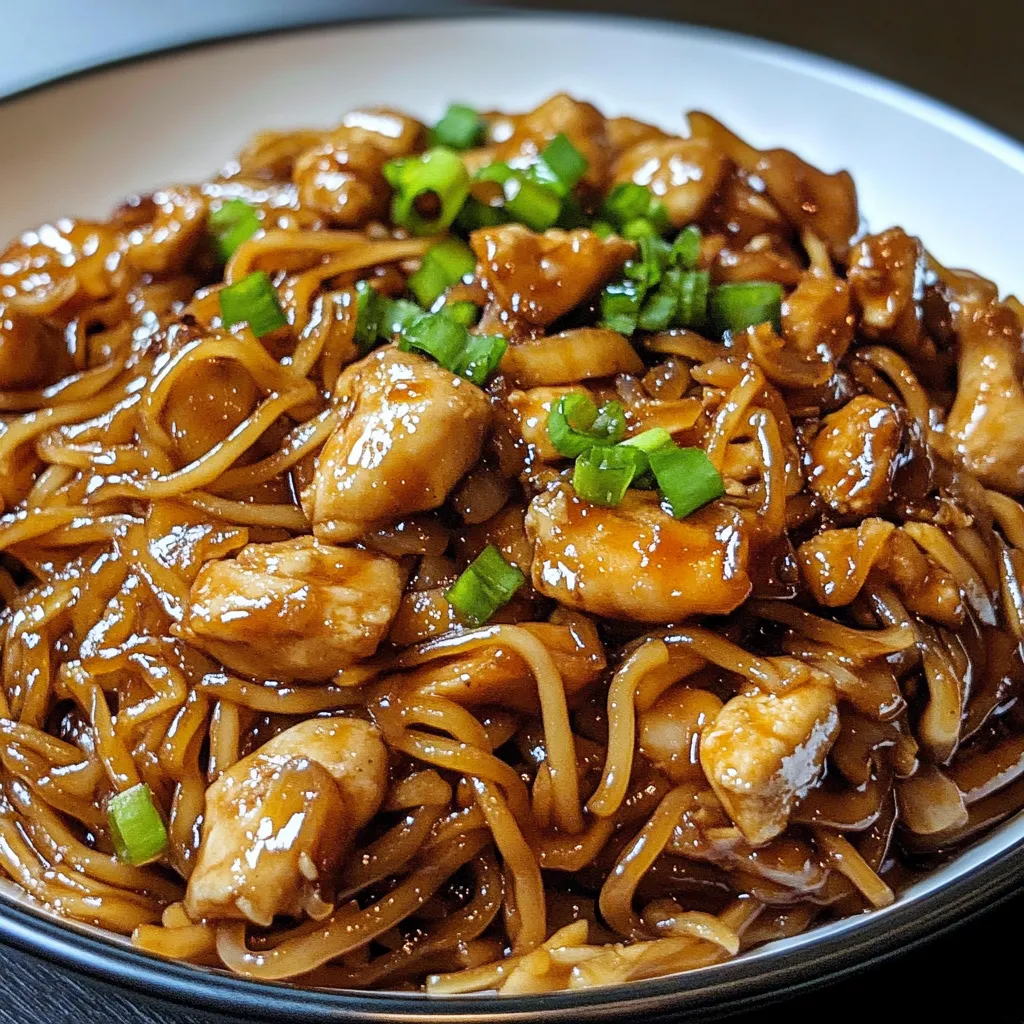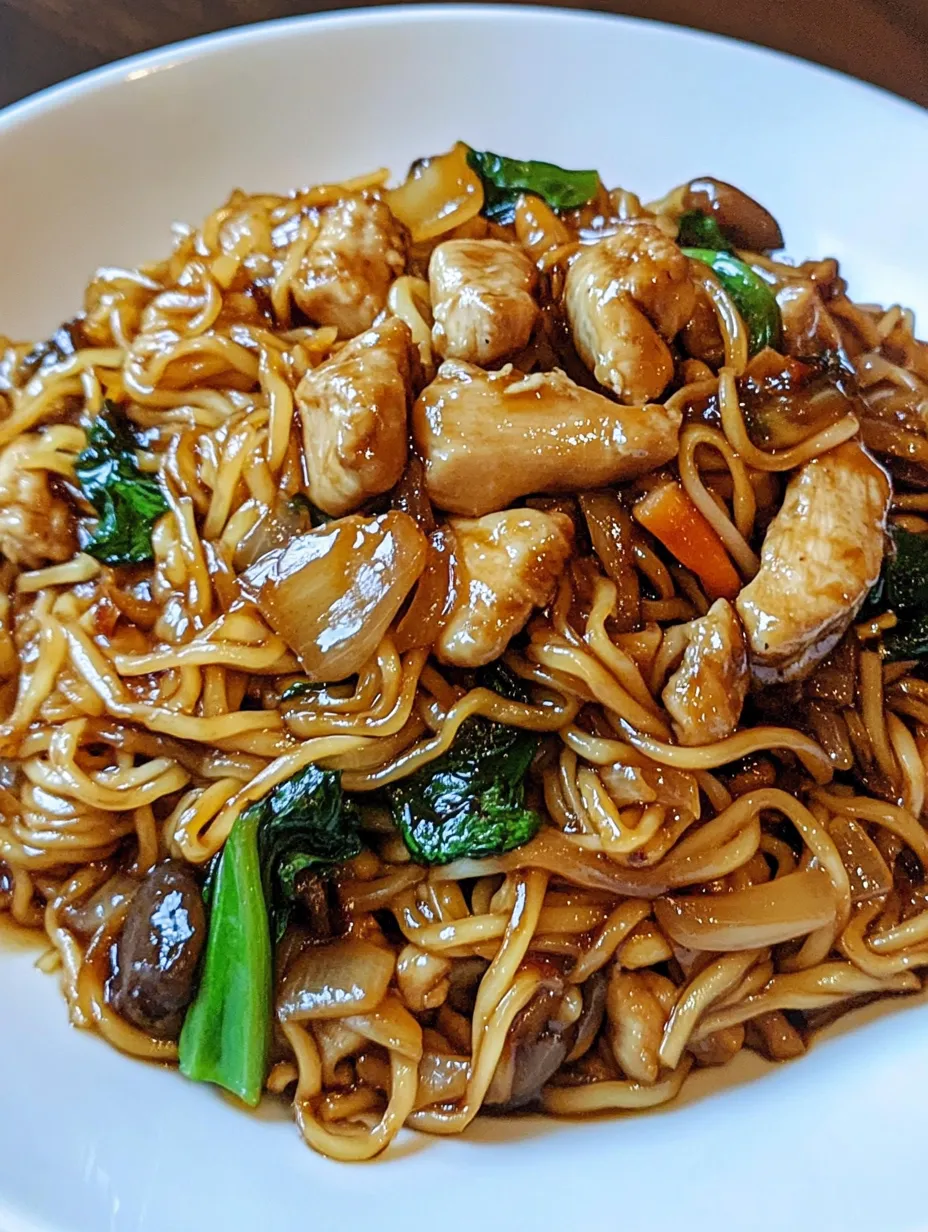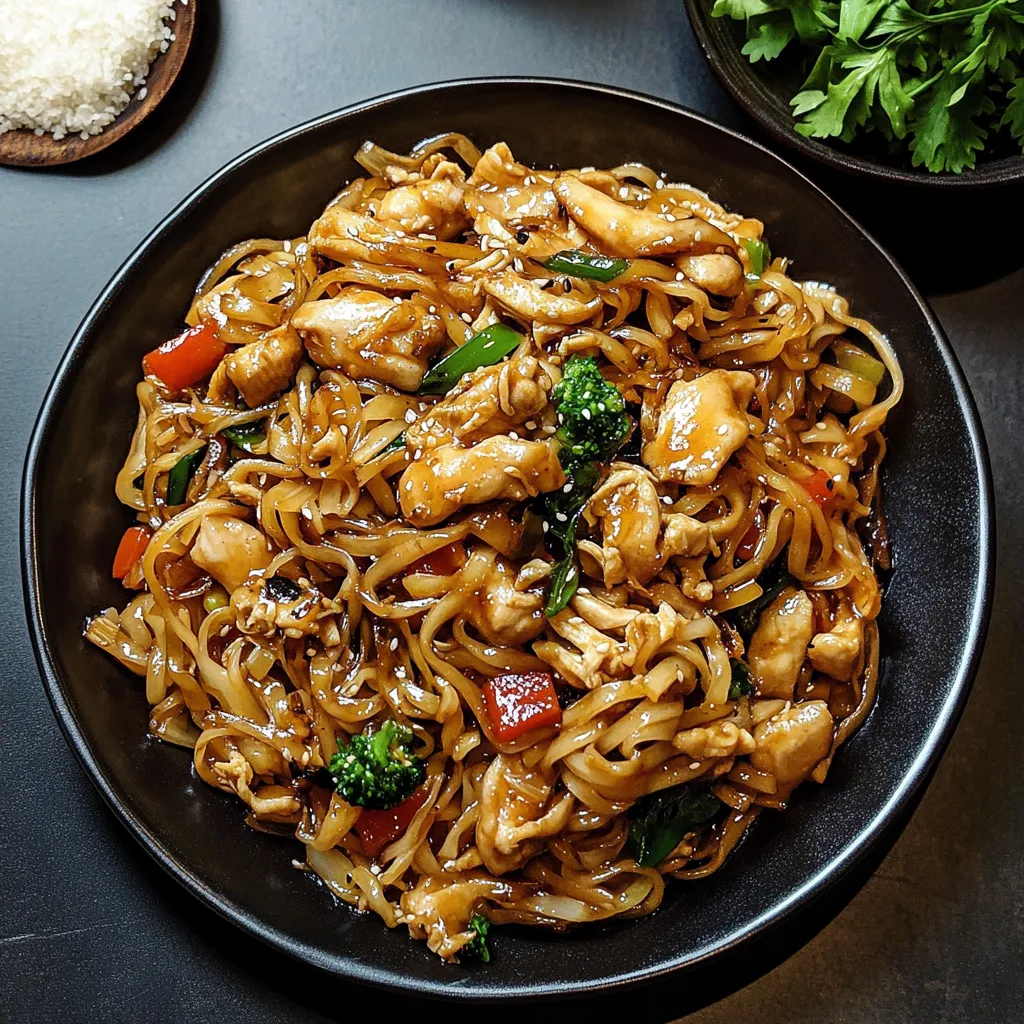 Pin it
Pin it
This garlic chicken lo mein has become my weeknight dinner hero when I need something fast, flavorful, and filling. The combination of tender chicken, crisp vegetables, and noodles all tossed in a savory sauce creates a restaurant-quality dish that consistently impresses my family.
I first made this dish when trying to recreate my favorite takeout meal during lockdown. What started as an experiment has turned into a weekly tradition that my family now requests more than the restaurant version.
Ingredients
- Chicken breasts: the protein base that soaks up all the delicious flavors. Look for plump pieces that feel firm to the touch.
- Garlic powder: creates a flavor foundation for the chicken marinade. Always check for freshness as older powder loses potency.
- Fish sauce: brings umami depth that cant be replicated. Red Boat brand offers the cleanest flavor profile.
- Fresh ginger: adds warmth and zest. Choose pieces that feel firm and have smooth skin.
- Garlic cloves: the star of the show. Select bulbs that feel heavy and tight with no sprouting.
- Cabbage: provides crunch and volume. Look for heads that feel dense with crisp leaves.
- Broccoli: adds nutrition and texture. Choose florets with tight green heads.
- Carrots: bring sweetness and color. Fresh carrots with vibrant orange color work best.
- Mushrooms: create meaty texture. Shiitake varieties add the most flavor but buttons work well too.
- Buckwheat lo mein noodles: provide the hearty base. These have more texture than regular lo mein.
- Soy sauce: creates the salty foundation for the sauce. Low sodium allows you to control salt levels.
- Hoisin sauce: adds sweet depth and thickness. Lee Kum Kee brand offers authentic flavor.
- Szechuan garlic butter: a secret ingredient that elevates the entire dish. Make your own by mixing butter with garlic and Szechuan peppercorns.
How To Make Garlic Chicken Lo Mein
- Marinate the chicken:
- Combine cubed chicken with garlic powder salt pepper fish sauce and grated ginger thoroughly massaging the seasonings into the meat. Let sit for at least 15 minutes while preparing other ingredients allowing the flavors to penetrate deeply into the chicken.
- Cook the noodles:
- Bring a large pot of water to a rolling boil then add the lo mein noodles. Cook them for 1 to 2 minutes less than package instructions to achieve an al dente texture as theyll finish cooking in the sauce. Immediately rinse under cold water after draining to stop the cooking process and prevent sticking.
- Sear the chicken:
- Heat your wok or large skillet until nearly smoking before adding oil. This creates the perfect environment for developing color without overcooking the chicken. Add chicken in a single layer working in batches if necessary to prevent crowding which would steam rather than sear the meat. Allow it to form a golden crust before stirring.
- Build the flavor base:
- Add half the minced garlic and Szechuan garlic butter to the nearly cooked chicken creating an aromatic foundation. The butter will sizzle and the garlic will become golden and fragrant within 30 seconds be careful not to burn it. Remove chicken promptly to prevent overcooking.
- Layer the vegetables:
- Start with aromatics adding remaining garlic and ginger to the hot pan and stirring constantly to prevent burning. Add vegetables in order of cooking time beginning with carrots and broccoli followed by cabbage mushrooms and celery. Maintain high heat and keep everything moving to achieve tendercrisp texture.
- Create the sauce magic:
- Return chicken to the pan add partially cooked noodles and pour sauces directly over hot ingredients. The residual heat activates the sauces causing them to caramelize slightly and cling to the noodles. Toss continuously for even coating allowing the flavors to meld together while the noodles finish cooking.
 Pin it
Pin it
The Szechuan garlic butter is what truly sets this recipe apart. I discovered this trick from my Chinese neighbor who taught me that this simple compound butter adds incredible depth to stir fries. She would always say the secret to great Chinese cooking is understanding the balance between fresh ingredients and powerful seasonings.
Storage and Reheating
This lo mein keeps beautifully in airtight containers in the refrigerator for up to 4 days. The flavors actually intensify overnight as the noodles absorb more of the sauce. When reheating add a splash of water or chicken broth to refresh the noodles and prevent drying out. I find a quick stir fry in a hot pan works better than microwave reheating maintaining more texture in both the vegetables and noodles.
 Pin it
Pin it
Make It Your Own
This recipe welcomes adaptation based on what you have available. Swap chicken for shrimp for a faster cook time or tofu for a vegetarian version. The vegetable mix is completely flexible use bell peppers snap peas or bok choy when in season. If you cant find buckwheat lo mein regular lo mein ramen or even spaghetti will work in a pinch. For those avoiding gluten rice noodles make an excellent substitute just be sure to seriously undercook them before adding to the stir fry.
The Cultural Context
Lo mein translates to stirred noodles in Cantonese highlighting the cooking technique that separates it from other noodle dishes. While traditional lo mein often features more subtle flavors this version leans into the garlic for a more robust experience. The dish originated in northern China but has evolved significantly through American Chinese cuisine. This recipe strikes a balance between authentic techniques and flavors that appeal to western palates creating a dish that honors tradition while being accessible for home cooks.
Frequently Asked Questions
- → How do I cook buckwheat lo mein noodles perfectly?
Cook buckwheat lo mein noodles according to package directions but undercook them by 1–2 minutes for a firmer texture. Drain and toss with a bit of oil to prevent sticking.
- → Can I use different vegetables for this dish?
Yes, you can customize with vegetables like bell peppers, snow peas, or zucchini to suit your taste or what you have on hand.
- → What can I substitute for Szechuan garlic butter?
You can use regular garlic butter mixed with a pinch of chili flakes or a teaspoon of Szechuan sauce for a similar flavor.
- → How do I ensure tender chicken pieces?
Marinate the chicken with garlic powder, fish sauce, ginger, and seasonings for at least 10 minutes before cooking. Avoid overcooking by monitoring doneness closely.
- → Can I make this dish vegetarian?
Yes, swap the chicken with tofu or a plant-based protein and replace fish sauce with soy sauce or a vegan alternative.
